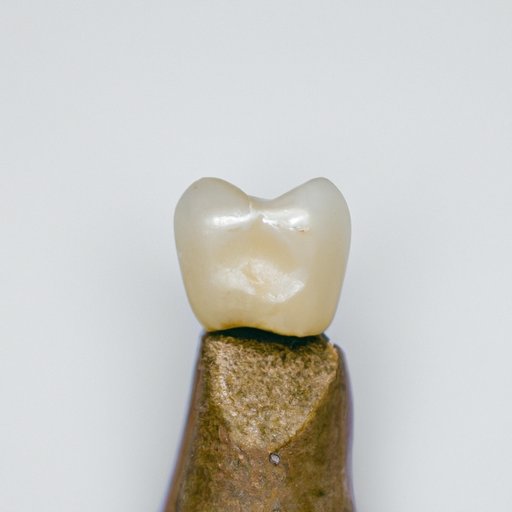Introduction
A tooth crown is a type of dental restoration that is used to strengthen and protect a damaged or weakened tooth. The crown procedure involves shaping the existing tooth and then covering it with a custom-made cap made from porcelain, metal, or composite resin. This procedure can be used to treat a variety of dental issues such as decay, fractures, and discoloration.
Crowns are beneficial because they can help restore the strength and appearance of a damaged tooth. This can give patients improved chewing ability and better overall oral health. Additionally, crowns can also be used to improve the aesthetic appearance of a tooth by covering up discoloration or other imperfections.

Understanding What is Involved in Placing a Tooth Crown
Placing a tooth crown involves several steps. The first step is for the patient to visit their dentist for an examination and consultation. During this appointment, the dentist will evaluate the condition of the tooth and determine whether a crown is the best option for restoring the tooth.
Once the dentist has determined a crown is the best treatment option, they will begin the process of preparing the tooth for the crown. This may involve reshaping the tooth, removing any decay, and filling in any cavities. In some cases, the dentist may need to use a root canal procedure to remove any infected tissue before the crown can be placed.
Once the tooth is prepared, the dentist will take an impression of the tooth using a special dental material. This impression will be used to create a customized crown that fits perfectly over the prepared tooth. Once the crown is ready, the dentist will place it over the tooth and secure it with a dental adhesive.
When the crown is placed, the dentist will check to make sure it fits properly and that there is no pain or discomfort. If everything looks good, the dentist will polish the crown and the patient will be able to leave the office with a restored tooth.
Investigating Different Types of Tooth Crowns
There are several different types of tooth crowns available. The type of crown that is best for a patient will depend on their individual needs and preferences. Some of the most common types of crowns include:
- Porcelain Fused to Metal (PFM) – These crowns are made of a combination of porcelain and metal, making them both strong and aesthetically pleasing.
- All-Ceramic – All ceramic crowns are made of porcelain and are designed to look like natural teeth. They are ideal for people who have sensitivities to metal.
- Metal – Metal crowns are made of gold, palladium, or another type of metal alloy. These crowns are very strong and durable, making them a good choice for molars.
- Resin – Resin crowns are made of a composite material and are less expensive than other types of crowns. They are not as strong as other types of crowns, but they can be used to restore front teeth.

Examining the Cost of Getting a Tooth Crown
The cost of getting a tooth crown will vary depending on the type of crown being used and the location of the dentist. Generally, crowns can range in price from $600 to $2,000 or more. In some cases, insurance may cover part or all of the cost of the crown. It is important for patients to contact their insurance provider to determine what coverage is available.
For those without insurance, many dentists offer payment plans or discounts for cash payments. Patients should talk to their dentist to determine what options are available.

Exploring What to Expect After Receiving a Tooth Crown
After receiving a tooth crown, patients should practice good oral hygiene habits to keep the crown in good shape. This includes brushing twice a day, flossing daily, and visiting the dentist regularly for checkups and cleanings. Patients should also avoid eating hard or sticky foods that could damage the crown.
Patients should also be aware of possible side effects and complications associated with crowns. These may include sensitivity to hot and cold temperatures, gum irritation, and temporary discomfort. Patients should contact their dentist if they experience any of these symptoms.
Conclusion
A tooth crown is a popular dental restoration procedure that can be used to strengthen and protect a damaged or weakened tooth. The process of placing a crown involves several steps, including examining the tooth, preparing the tooth for the crown, and securing the crown with a dental adhesive. There are several types of crowns available, and the cost of the procedure will vary depending on the type of crown being used and the location of the dentist. Finally, patients should practice good oral hygiene habits and be aware of possible side effects and complications associated with crowns.
Overall, tooth crowns can be a great way to restore the strength and appearance of a damaged tooth. With proper care and maintenance, a crown can last for many years. For those considering a tooth crown, it is important to consult with a dentist to determine if it is the right option for their individual needs.
(Note: Is this article not meeting your expectations? Do you have knowledge or insights to share? Unlock new opportunities and expand your reach by joining our authors team. Click Registration to join us and share your expertise with our readers.)
